How Running Fuels This Musician’s Creative Process
Gavin Gardiner, lead singer of The Wooden Sky, on the sanctity running brings as he bares his soul to the world
Last night I struggled my way through a slow 7 kilometres. Sure, I’ll tell myself it was 33 degrees, but while it was hot, I know what my struggle really means: I’m a long way from where I need to be come October 22nd. This will be my fourth half-marathon in three years, and though my commitment sometimes comes in waves, running has become an important fixture in my life and creative process.
In 2013, after three albums and as many years touring, life on the road had taken its toll on my body and my mind. I’d seen it in those around me as well, and after losing a band member, friendships and mental health seemed to hang on by a thread. I was at a low point and feeling lost about what to do next. It was that winter that I started frequenting the local Y. Before long, it became an addiction, and every other morning I would meet the other two members of the band, Simon and Kip, at the corner of Dovercourt and College. The band that pumps iron together, stays together… or something like that. We worked out in the mornings, wrote songs in the afternoon, and before we knew it we had the bones of what would become our next record.
That spring, once the snow had melted and the streets were clear, my partner, Sarah, began to push me to join her on her runs. At this point, she had a few half-marathons under her belt and had her sights set on 42 kilometres. It was difficult for me at first. At the time, I had what fellow musician and marathoner Luc Doucet described as the physique of a Clydesdale (coming in at 6’6” and over 200 pounds). But once I started getting up over the 5K mark, I was hooked. I began wearing my running clothes to soundcheck and soon found myself running along the Seine, past the Louvre and Cathedral de Notre-Dame, rather than sitting in some dank green room trying not to get drunk before the show. These days, it is not uncommon to see the entire band out running before a show or spending our day off hitting the hotel gym before heading out to explore a new city.
Running has also changed my relationship with time. In the hour that I might spend out running, exploring new cities like Tokyo, Zurich, or Saskatoon, I become hyper aware of every moment, every step, and every breath. In the course of a run you go through so many emotions, work through problems, and, in my case, often write new music. And while I enjoy the physical benefits that come from running, its effects on my mind are what I have really come to appreciate. The intense focus that running affords is invaluable to my creative process. As the miles started adding up and the runs became longer, I found I was more focused and creative in the time I had left.
In writing this, I realize that I am at a point where I need running as much as I did back when I laced up my first pair of ugly fluorescent shoes. Each runner I see brings me excitement and inspiration. Sometimes putting one foot in front of the other is hard enough.
This year I will again be running in support of Romero House and the work they do with refugees in my community. Find out more about how you can help here.
The Wooden Sky play the National Arts Centre in Ottawa on October 27. Swimming in Strange Waters, the band’s most recent record, is available at thewoodenskymusic.com.




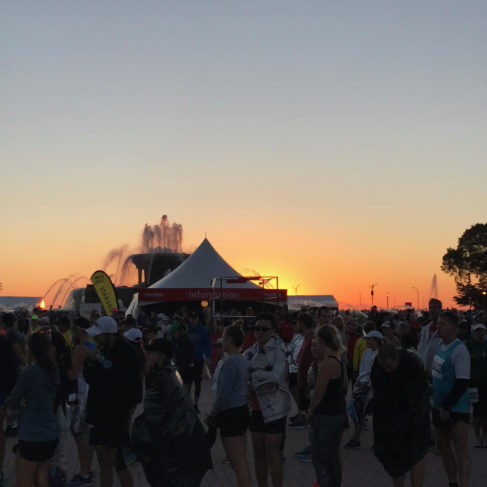 The day prior to the race was very humid and muggy, but thankfully it cooled down significantly by nighttime. In the early morning, temperature was about 14 Celsius and we were greeted with a glorious sunrise beyond the Buckingham Fountain as we checked our bags and went for one last bathroom break. The weather would remain relatively cool for about two hours but then the temperature rose significantly, and was at least about 26C by the time I finished the race around 11:30, and in the latter part of the race, there were more portions of the route not shaded by tall buildings.
The day prior to the race was very humid and muggy, but thankfully it cooled down significantly by nighttime. In the early morning, temperature was about 14 Celsius and we were greeted with a glorious sunrise beyond the Buckingham Fountain as we checked our bags and went for one last bathroom break. The weather would remain relatively cool for about two hours but then the temperature rose significantly, and was at least about 26C by the time I finished the race around 11:30, and in the latter part of the race, there were more portions of the route not shaded by tall buildings. The relatively flat course makes for a fast course, and most of the bridges has the metal grate surface carpeted. The one moderate incline in the last few hundred metres to the finish line proved to be a small challenge. I appreciated the frequent kilometre markers and the big water/Gatorade stations and the cheerful volunteers. Several sprinklers and a few sponge stations were along the route, which came in handy once the sun was out in full force, and chafe not–several stations had Vaseline for runners to slather on.
The relatively flat course makes for a fast course, and most of the bridges has the metal grate surface carpeted. The one moderate incline in the last few hundred metres to the finish line proved to be a small challenge. I appreciated the frequent kilometre markers and the big water/Gatorade stations and the cheerful volunteers. Several sprinklers and a few sponge stations were along the route, which came in handy once the sun was out in full force, and chafe not–several stations had Vaseline for runners to slather on.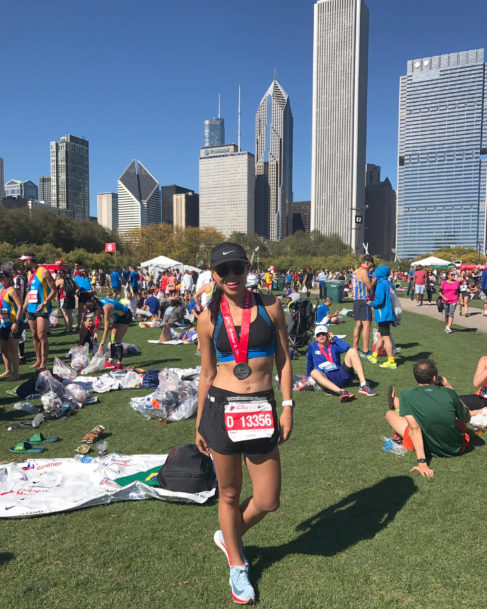 tIn the end, we ran our second fastest marathon here (and my marathon PB is also in Chicago three years ago), so the flat, festive course is a nice fast one for those looking to PB or BQ.
tIn the end, we ran our second fastest marathon here (and my marathon PB is also in Chicago three years ago), so the flat, festive course is a nice fast one for those looking to PB or BQ.
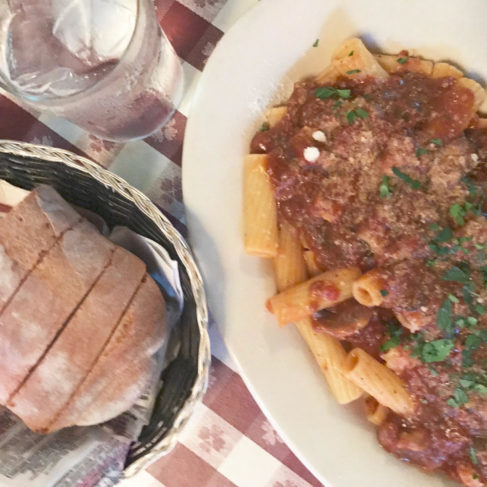






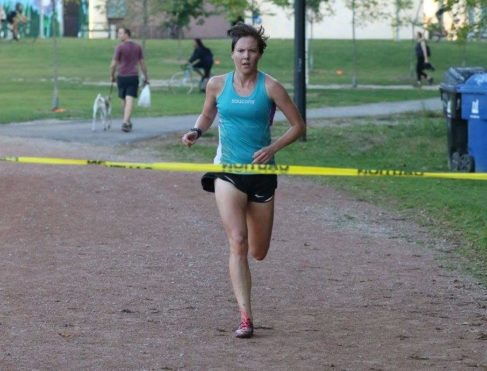
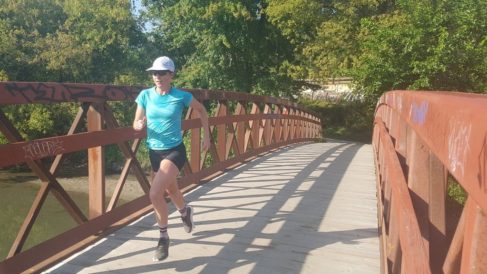

 Our Magazine
Our Magazine Previous Release
Previous Release
